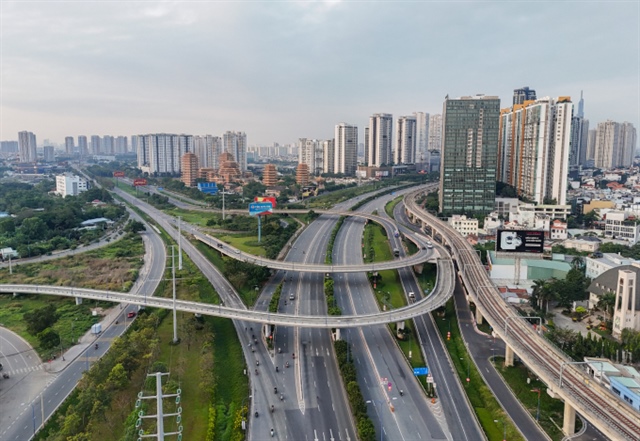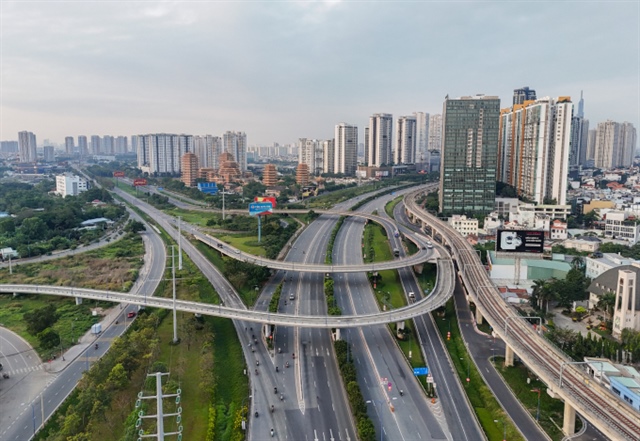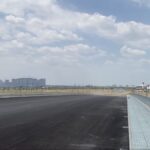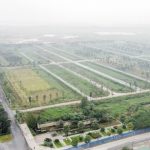**TOD-Led Development: Overcoming Challenges to Unleash HCMC’s Economic Growth**
The Transit-Oriented Development (TOD) model is a strategic initiative for Ho Chi Minh City (HCMC), outlined in Resolution 98. If successfully implemented, this model can become a powerful catalyst for economic growth, helping the city achieve its ambitious double-digit growth target and creating a ripple effect across various sectors.
As per the city’s plan, by 2035, HCMC aims to develop 335 km of urban railway and pilot 11 TOD zones. However, the city is facing significant challenges in realizing this vision, with a slow implementation pace. Experts estimate that at the current rate, it could take up to a century for the city to accomplish these goals.
Identifying these hurdles, Dr. Tran Du Lich, points out five critical challenges that need to be addressed: mechanisms, planning, budget, resources, and land funds.
According to Mr. Lich, the current TOD implementation mechanism is fragmented and scattered, with overlapping legal procedures involving multiple departments and agencies. This complexity hinders the approval process and project development.
HCMC’s planning process is equally challenging, with the current situation resembling a messy drawing, making adjustments even more difficult than starting from scratch.

Real estate in HCMC’s East Zone with skyscrapers, apartments, and projects in January 2025. Photo: Quynh Tran |
Regarding capital and resources, the city’s borrowing capacity for TOD projects is constrained by a regulation limiting total debt to 120% of the city’s budget revenue. Meanwhile, TOD development requires substantial land, time, and financial resources. Additionally, major cities like Hanoi and HCMC are adopting the TOD model primarily through independent research based on the experiences of other countries, without a standardized government framework.
Lastly, the most challenging and costly aspect of TOD development is land acquisition and compensation. Mr. Lich predicts that with HCMC’s high land prices, compensation and land acquisition costs will be astronomical. Combined with limited borrowing capacity, the feasibility and attractiveness of TOD projects for both the public and private sectors are diminished.
Sharing this view, Mr. Le Hoang Chau, Chairman of the HCMC Real Estate Association, emphasizes that land acquisition is the most significant hurdle in TOD implementation. The city currently has approximately 64,000 hectares of land suitable for compact urban development. Of this, 32,000 hectares are vacant land with minimal impact on residents, 9,000 hectares are agricultural or production land that can be converted, and 23,000 hectares have residential or functional areas. A large proportion of this land requires compensation and resettlement.
Land near metro stations is considered prime real estate, attracting the attention of property investors. As metro projects are long-term, speculators often take advantage of this by buying land in advance, driving up prices by several folds. Consequently, businesses and the government have to bear the burden of high land compensation costs.
Proposing solutions, Dr. Tran Du Lich suggests that the government should streamline and integrate the TOD implementation mechanism to expedite procedures. He recommends establishing a dedicated TOD council, led by city leaders, to oversee all activities related to TOD development. HCMC also needs to create a special mechanism to acquire large land funds and grant authority for land-use conversion and function adjustment to align with the city’s vision for compact urban development along major transportation corridors.
On the topic of capital, Mr. Dang Huy Dong, former Deputy Minister of Planning and Investment, suggests encouraging deeper and broader participation from domestic enterprises in TOD development. He explains that previously, Vietnamese contractors played a secondary role to foreign counterparts. However, if the city boldly empowers local contractors to take the lead in specific areas according to their strengths, it can not only enhance their competitiveness but also reduce TOD investment costs by up to 30% compared to previous projects.
Dr. Nguyen Hoang Tung, Deputy Head of the TOD Group under the GCIP Program (Promoting the Construction of Green and Sustainable Cities), emphasizes the importance of public-private partnerships to maximize resource mobilization for TOD projects. Leveraging the expertise and capital of the private sector has been a successful strategy in cities like Hong Kong and Shenzhen. In this model, the government provides initial enablers, and the private sector builds on them to create value.
Mr. Nguyen Dac Phuoc, Director of Project Management Unit 3, Hanoi Urban Railway Management Board, proposes that during the TOD area planning process, the city should actively seek input from affected residents and potential investors. This approach aims to expedite planning, approval, and private sector participation in TOD development.
Regarding the rational use of land funds in TOD areas, Mr. Phuoc suggests three development models after the TOD area planning is approved. The first is to auction land-use rights for clean land lots. The second is to select investors through bidding for project implementation. Finally, the city can use its budget to invest in urban development projects within the core area (200m radius around the stations).
Phuong Uyen
The Slow Progress of Dong Nai’s Key Projects
Despite efforts to accelerate development, key infrastructure projects in the province of Dong Nai have been consistently delayed. Among these projects, one has fallen behind schedule by 500 days, while another faces the challenge of completing a bridge over a river without the necessary connecting roads.
The Ultimate Guide to Real Estate Acquisition in Binh Duong: Unlocking a $138 Million Opportunity
The Ho Chi Minh City Stock Exchange-listed Duc Thanh Wood Processing Joint Stock Company (HOSE: GDT) is about to acquire a land lot and factory buildings in Tan Uyen City, Binh Duong Province, for VND 138 billion. This real estate transaction was previously mentioned by GDT’s Chairman at the 2024 Annual General Meeting.





















